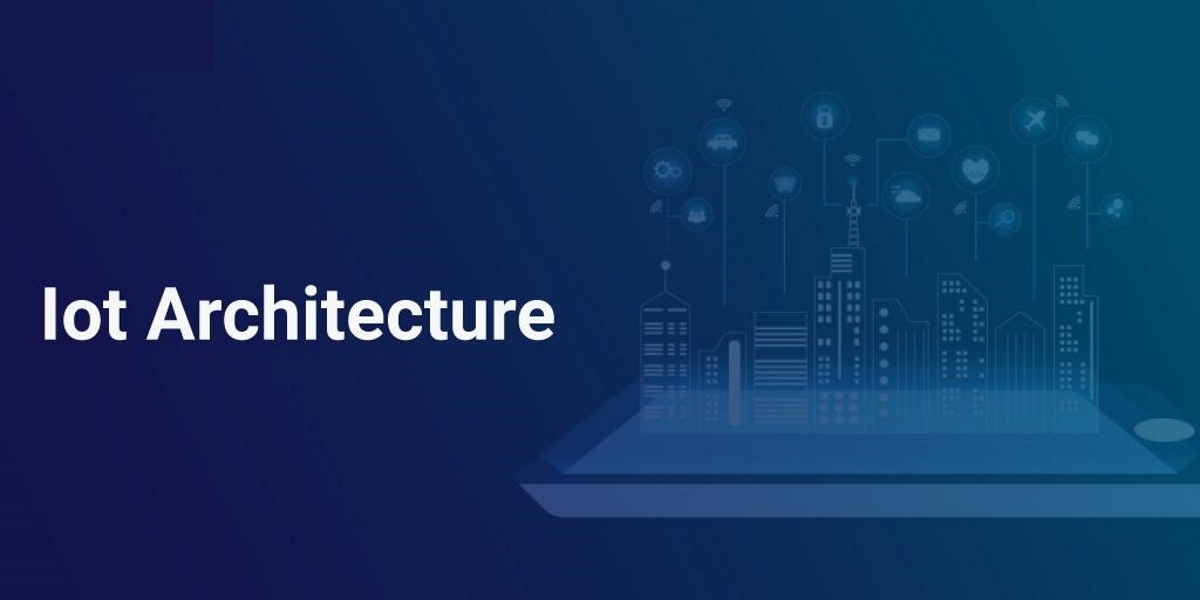We often hear concepts like Smart Homes, Smart Cars and Smart Cities. These are all possible with the advent of the Internet of Things or commonly known as IoT. Using the IoT, anything can be converted into a smart device. In other words, modern technology is now cool. The Internet of Things is only meant to network with several devices that can easily sense, gather and transfer data using the internet without the intervention of human beings. Although IoT has a huge demand in the market and will have its big boom in the future owing to the dearth in IoT App Development and other related professions, it seems to have its own limitations. If you are wondering about the Internet of Things Architecture of IoT Architecture, then you have reached the right place. We will be exploring it at length below.
What is the Internet of Things Architecture?
It is safe to say that IoT is not simply Internet-hooked consumer devices. It is a technology that makes systems capable of automatically sensing and responding to stimuli without any human intervention. Thus, those working on
IoT mobile app development needs to create a proper process flow the specific framework that helps make the IoT solution.
This brings us to IoT Architecture
The Stages of Internet of Things Architecture
The IoT architecture comprises of an IoT system and it further is connected to deal with the data with functions like accumulation, storage, and process. It has four primary stages, but before that, you should know that there are three layers attached to IoT architecture, which include:
1 The IoT Device Layer - which is the client-side
2 The IoT Getaway Layer - which deals with the operators found over the server-side
3 The IoT Platform Layer - which deals with a pathway for connecting the different clients along with the operators
To have a fair understanding of IoT mobile app development, it is mandatory to address the needs of the different layers that are at the different stages of the IoT Architecture. In order to sustain the IoT Architecture, it is important to have these features - functionality, availability, scalability, and maintainability. Without having these features, it is practically impossible to gain results. Hence one has to understand the four stages of IoT architecture, which are vital to the overall building process.
Let's discuss them:
There are four Stages of IoT architecture, which are listed below in simple language:
1. Sensors and actuators
2. Internet getaways and Data Acquisition Systems
3. Edge IT
4. Datacenter and cloud
In order to get a comprehensive understanding of the key actions and the significance of all the four stages, we need to dig deep in each of these stages.
Stage 1 - Sensors and Actuators
One of the key features of sensors is the capability to convert the information to the outer world in the form of data. This helps in the analysis to get information. The actuators help in pushing the process one step further allowing the devices to intervene over the physical reality. For instance, one can switch the lights off and adjust the temperature of the room. This stage, therefore, adjusts all the things you need in this physical world for getting the required insights for further study.
Stage 2 - Internet getaways and Data Acquisition Systems
In this stage, we still work closely with sensors and actuators and then comes the Internet getaways and data acquisition systems or DAS. To be specific, we see the DAS connects to the sensor network and brings out the output, whereas the Internet getaways are seen working with the help of LANs or Wi-Fi to carry out the further process. The key highlight of this stage is to process a wide range of data collected in the earlier stage and use it for an optimal amount for advanced study. Besides, one can also see the conversion in timing and structure is seen working here. In a nutshell, this stage helps the data to get both digitalized and aggregated.
Stage 3 - The Edge IT Systems
This stage of IoT architecture transfers the prepared data to the IT world. The edge IT systems carry out advanced analytics and pre-processing at this stage. In other words, it deals more with machine learning and visualization technologies. At times, some additional processing of data can be seen before it enters the data center.
Stage 4 - Data Center and Cloud
This is the last stage of IoT architecture. It carries the in-depth processing and follow-up revision for feedback. Here, not only are the IoTApp Development professional but OT professionals are required as well because one needs to carry out a complete, in-depth analysis both at the digital and human level. Wrapping up, the Internet of Things Architecture will have its boom in the near future. So, if you are planning to make your career in IoT mobile app development, this is the right time to enter into this field.

